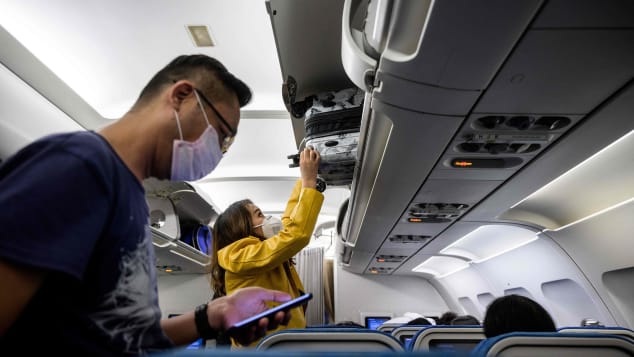With the pandemic turning our life upside down, everything is a risk activity nowadays – right from grocery shopping to taking a flight. We generally tend to think that taking a flight may be more risky but scientists and healthcare experts have found it to be otherwise.
While airlines are booming with festive offers many travelers are wary of taking a flight
The latest scientific evidence has come to their rescue as it offers both the reassurance that flying is relatively safe as well as warnings about what can still go wrong, says a CNN report.
The Flight Safety Reassurance

A Harvard University study released Tuesday used computer models to review airflow in airliner cabins, and it says the specialized onboard ventilation systems filter out 99% of airborne viruses. It was funded by airlines, airplane manufacturers and airports, but the Harvard researchers insist this did not impact their findings.
- Researchers at the university’s T.H. Chan School of Public Health found that even though air is recirculated back into the cabin, it goes through high-quality filters first.
- And virus droplets from one passenger are unlikely to infect another because of a “downward direction” of airflow, they said.
“This ventilation effectively counters the proximity travelers are subject to during flights,” their report says.
What does this mean?
The ventilation system, however, is not effective alone. Harvard’s researchers described masks as a critical part of keeping travelers healthy and credited the role of disinfection and passengers’ self-screening for Covid-19 symptoms.
The Harvard computer modeling was in line with another recent study by the Defense Department that used mannequins outfitted with surgical masks and particle detection equipment on Boeing 767 and 777 jets. It found little risk of transmission thanks to the masks and efficient air ventilation.

Harvard researchers described wearing masks as a critical part of keeping travelers safe in aircraft cabins, but stopped short of calling for a government mask mandate onboard flights.
What can go wrong?
On the other hand, a study released by Irish researchers shows what can go wrong onboard, even when precautions are taken.
Through contract tracing, public health officials in Dublin and other cities linked 13 cases to a single passenger on a seven-hour international flight this summer. Fewer than one in five seats were filled. None of the travelers were known to not wear a mask on the flight.
So how did that spread?
“Exposure possibilities for flight cases include inflight, during overnight transfer/pre-flight or unknown acquisition before the flight,“ the researchers wrote. One traveler could have picked up the virus from a family member. Two others spent multi-hour layovers in airport lounges.
But for others, “in-flight transmission was the only common exposure,” they concluded, noting that “four of the flight cases were not seated next to any other positive case, had no contact in the transit lounge, wore face masks in-flight and would not be deemed close contacts.”
Laboratories linked the cases as being from the same strain.
The Irish researchers recommended authorities improve contact tracing, and Harvard’s scientists encouraged people to minimize mask removal — such as when eating or drinking — in flight.
Harvard’s researchers are already turning their attention to other parts of the travel experience when people congregate without the aircraft ventilation system, such as in airport lounges and security lines.
Did you subscribe to our daily newsletter?
It’s Free! Click here to Subscribe!
Source: CNN
















